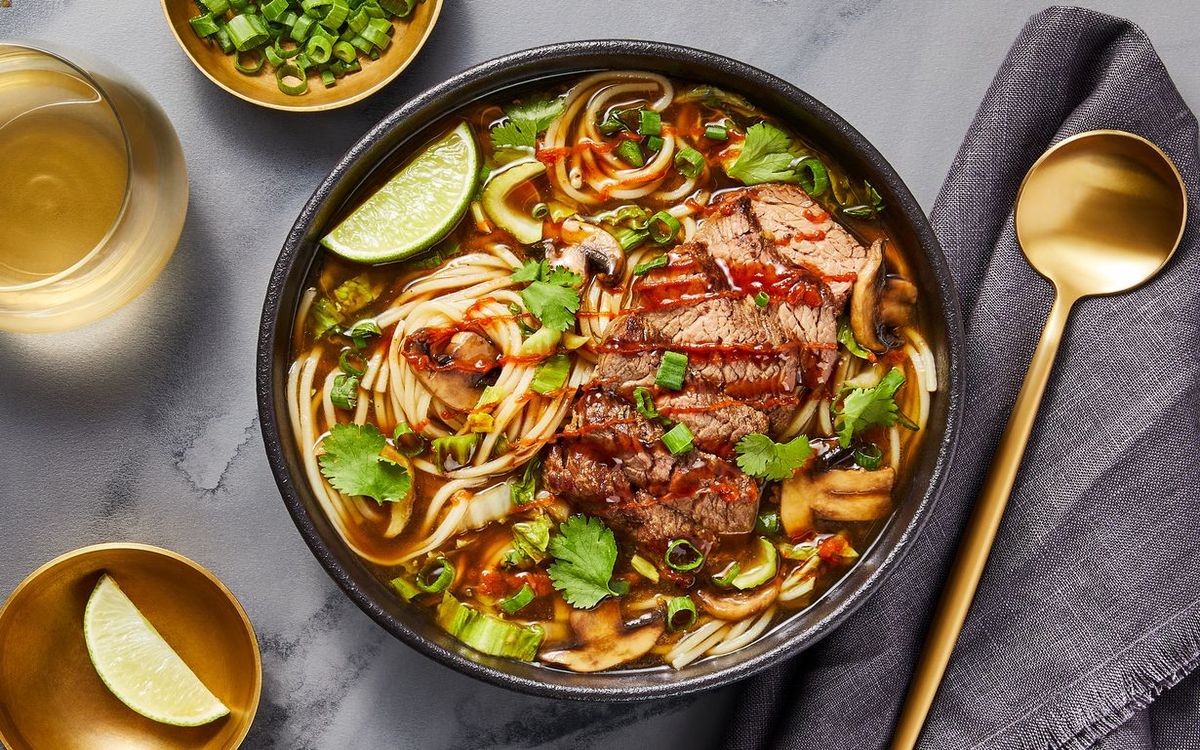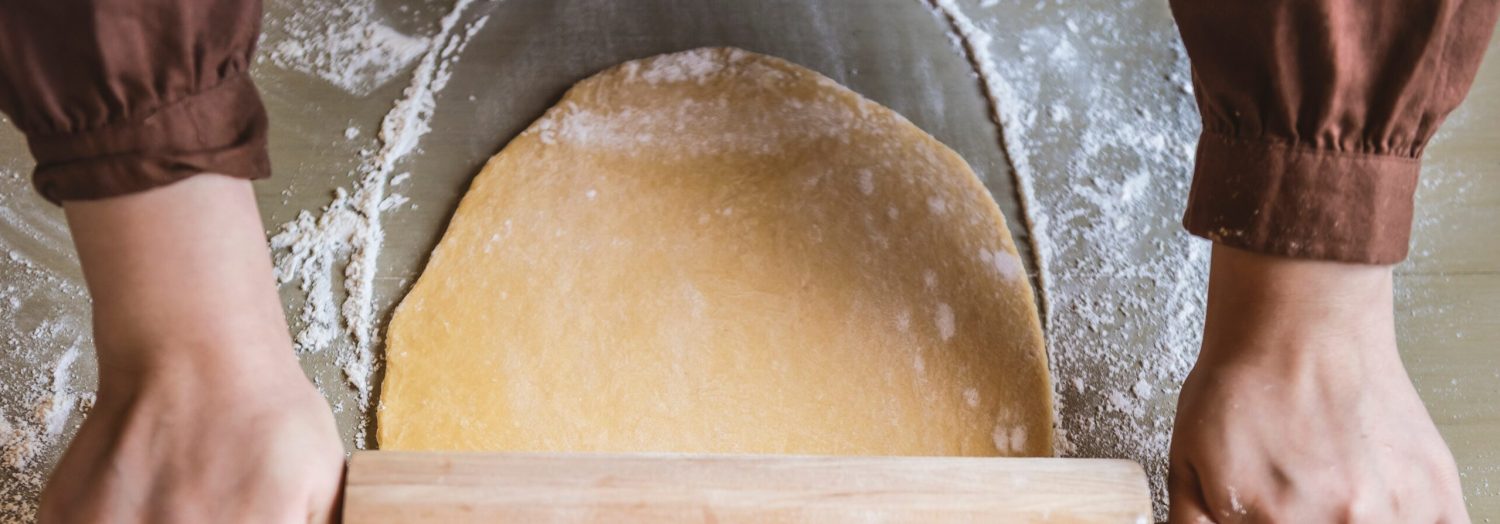Experience a delightful fusion of flavors with this Japanese Pho recipe. Combining the rich, umami essence of Japanese cuisine with the comforting warmth of Vietnamese pho, this dish is perfect for a cozy meal. The aromatic broth, tender chicken, and fresh herbs create a harmonious bowl that will tantalize your taste buds.
Some ingredients in this recipe might not be staples in every kitchen. Miso paste is a fermented soybean paste that adds depth to the broth. Rice noodles are a gluten-free alternative to wheat noodles and cook quickly. Fresh cilantro and bean sprouts add a refreshing crunch, while ginger and lime provide a zesty kick. These items can be found in the international or Asian section of most supermarkets.

Ingredients For Japanese Pho Recipe
Chicken broth: The base of the soup, providing a rich and savory flavor.
Soy sauce: Adds a salty and umami taste to the broth.
Miso paste: A fermented soybean paste that enhances the depth of the broth.
Ginger: Adds a warm and slightly spicy flavor.
Garlic: Provides a pungent and aromatic taste.
Rice noodles: Gluten-free noodles that cook quickly and absorb the broth well.
Chicken: Cooked and sliced, it adds protein and substance to the dish.
Bean sprouts: Adds a fresh and crunchy texture.
Lime: Provides a zesty and tangy flavor.
Cilantro: Fresh and aromatic, it adds a burst of flavor.
Green onions: Adds a mild onion flavor and a pop of color.
Technique Tip for This Recipe
To enhance the flavor of your chicken broth, consider roasting the ginger and garlic before adding them to the pot. Simply place the sliced ginger and minced garlic on a baking sheet and roast them in the oven at 400°F for about 10 minutes, or until they are golden brown. This will add a deeper, more complex flavor to your broth.
Suggested Side Dishes
Alternative Ingredients
chicken broth - Substitute with vegetable broth: Provides a similar depth of flavor while making the dish vegetarian-friendly.
soy sauce - Substitute with tamari: Offers a similar umami flavor and is gluten-free.
miso paste - Substitute with soybean paste: Delivers a comparable savory taste, though it may be slightly less complex.
ginger - Substitute with galangal: Adds a similar spicy and aromatic note, though slightly more citrusy.
garlic - Substitute with shallots: Provides a mild, sweet flavor that complements the broth well.
rice noodles - Substitute with glass noodles: Maintains the dish's texture and absorbs the broth flavors effectively.
chicken breast - Substitute with tofu: Keeps the protein content while making the dish vegetarian.
bean sprouts - Substitute with snow peas: Adds a similar crunch and freshness to the dish.
lime - Substitute with lemon: Offers a comparable citrusy tang to brighten the flavors.
cilantro - Substitute with parsley: Provides a fresh, herbaceous note without the soapy taste some people associate with cilantro.
green onions - Substitute with chives: Adds a mild onion flavor and a touch of color to the dish.
Other Alternative Recipes Similar to This Dish
How to Store / Freeze This Dish
- Allow the broth to cool completely before storing. This helps prevent condensation, which can dilute the flavor.
- Store the broth separately from the noodles and toppings. This keeps the noodles from becoming mushy and the toppings fresh.
- Transfer the cooled broth into airtight containers or heavy-duty freezer bags. Leave some space at the top to allow for expansion when freezing.
- Place the cooked noodles in a separate airtight container. If you plan to store them for more than a day, toss them lightly with a bit of oil to prevent sticking.
- For the chicken, bean sprouts, cilantro, and green onions, store each ingredient in individual containers. This ensures that each component retains its texture and flavor.
- If freezing, label each container with the date. The broth can be frozen for up to 3 months, while the noodles and toppings are best used within a month.
- When ready to use, thaw the broth in the refrigerator overnight or use the defrost setting on your microwave.
- Reheat the broth on the stove until it reaches a rolling boil. This ensures that any potential bacteria are killed.
- Warm the noodles by briefly dipping them in boiling water or microwaving them for a few seconds.
- Assemble your pho by placing the warmed noodles in a bowl, pouring the hot broth over them, and adding the toppings just before serving.
How to Reheat Leftovers
- Start by separating the broth from the noodles and toppings if possible. This prevents the noodles from becoming overly soggy.
- Reheat the broth in a pot over medium heat until it reaches a gentle simmer. This ensures the flavors remain intact and the broth is evenly heated.
- If you have a microwave, you can also reheat the broth in a microwave-safe bowl. Heat it in 1-minute intervals, stirring in between, until it’s hot.
- While the broth is reheating, you can warm the noodles by placing them in a colander and pouring hot water over them. This will quickly bring them back to the desired temperature without overcooking.
- For the chicken, you can either add it to the broth while it’s reheating or warm it separately in the microwave for about 30 seconds to 1 minute.
- Once everything is heated, assemble your pho by placing the noodles in a bowl, pouring the hot broth over them, and topping with the reheated chicken.
- Add fresh bean sprouts, cilantro, green onions, and a squeeze of lime just before serving to maintain their crispness and vibrant flavors.
Best Tools for This Recipe
Large pot: Used to bring the chicken broth to a boil and simmer the ingredients.
Knife: Essential for slicing the ginger and chopping the garlic, cilantro, and green onions.
Cutting board: Provides a safe surface for slicing and chopping ingredients.
Measuring spoons: Used to measure the soy sauce and miso paste accurately.
Wooden spoon: Useful for stirring the broth and ensuring the miso paste dissolves properly.
Strainer: Helps to drain the cooked rice noodles.
Tongs: Handy for handling the cooked chicken breast and placing it in the bowls.
Bowls: Used to serve the pho, holding the noodles, broth, and toppings.
Ladle: Ideal for pouring the hot broth over the noodles in each bowl.
Serving spoon: Useful for adding the bean sprouts, cilantro, and green onions to the bowls.
How to Save Time on This Recipe
Use pre-cooked chicken: Save time by using pre-cooked chicken from the store or leftovers from a previous meal.
Instant noodles: Opt for instant rice noodles that cook in just a few minutes instead of traditional ones.
Pre-minced garlic and ginger: Purchase pre-minced garlic and ginger to cut down on prep time.
Ready-made broth: Use store-bought chicken broth to avoid the lengthy process of making it from scratch.
Pre-washed vegetables: Buy pre-washed bean sprouts and cilantro to skip the washing and drying steps.

Japanese Pho Recipe
Ingredients
Broth
- 8 cups Chicken broth
- 2 tablespoon Soy sauce
- 1 tablespoon Miso paste
- 1 inch Ginger, sliced
- 2 cloves Garlic, minced
Noodles
- 8 oz Rice noodles
Toppings
- 1 Chicken breast, cooked and sliced
- 1 cup Bean sprouts
- 1 Lime, cut into wedges
- 1 cup Fresh cilantro, chopped
- 1 cup Green onions, chopped
Instructions
- 1. In a large pot, bring the chicken broth to a boil.
- 2. Add soy sauce, miso paste, ginger, and garlic. Simmer for 15 minutes.
- 3. Cook rice noodles according to package instructions. Drain and set aside.
- 4. Divide the cooked noodles into bowls. Pour the hot broth over the noodles.
- 5. Top with sliced chicken, bean sprouts, lime wedges, cilantro, and green onions. Serve immediately.
Nutritional Value
Keywords
Suggested Appetizers and Desserts
More Amazing Recipes to Try 🙂
- Japanese Gratin Recipe50 Minutes
- Nikujaga Recipe45 Minutes
- Japanese Salmon Flake Recipe25 Minutes
- Japanese Spicy Chicken Recipe50 Minutes
- Japanese Eel Rice (Unadon) Recipe35 Minutes
- Japanese Perilla (Shiso) Recipe15 Minutes
- Japanese Hand Roll Recipe30 Minutes
- Japanese Hanami Dango Recipe30 Minutes

Leave a Reply